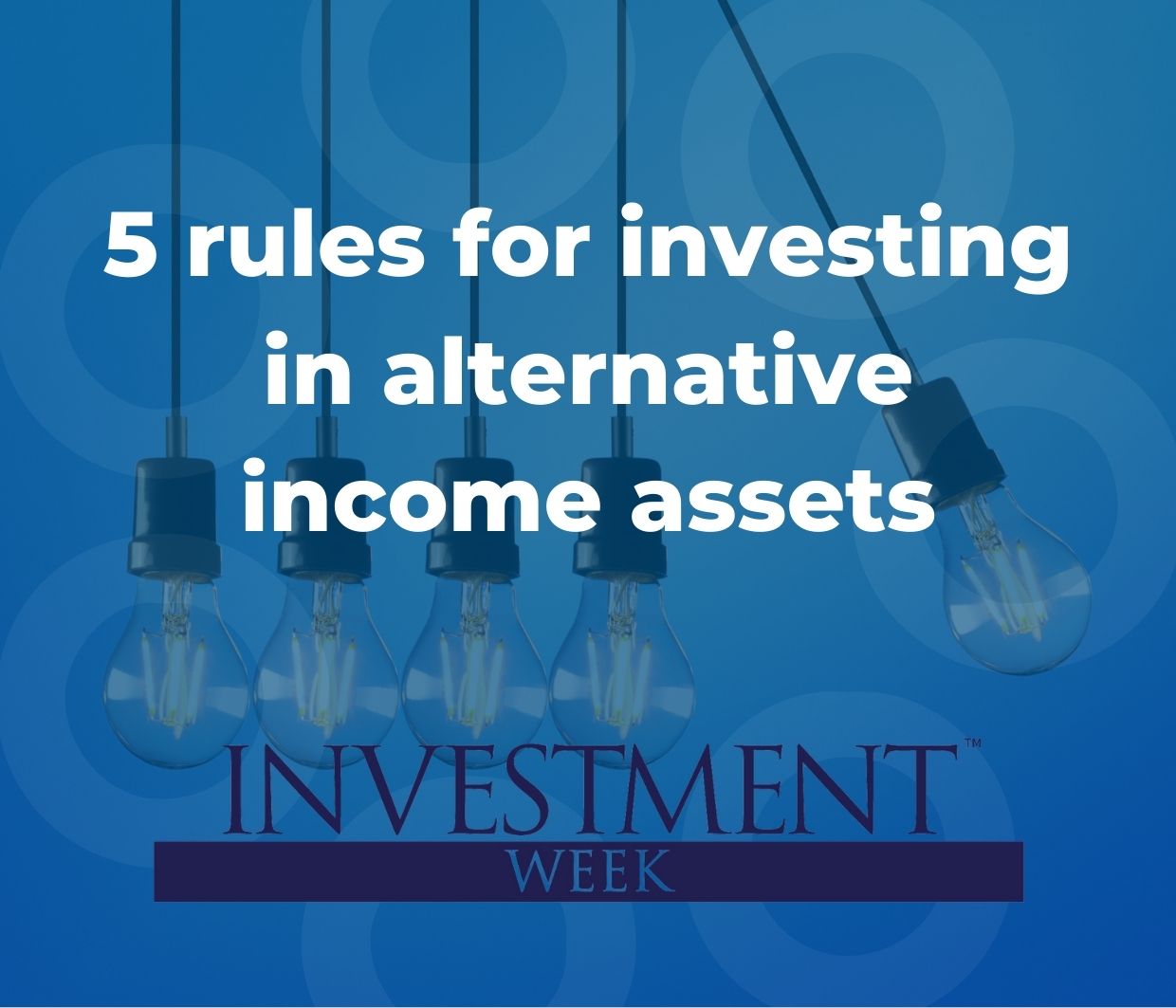With ‘safe haven’ income assets such as government bonds suffering their worst year in decades, the classic 60/40 portfolio has been upended in 2022.
Indeed, far from cushioning investors from equity market falls, traditional fixed income investments have further weakened portfolios this year amid consecutive central bank rate hikes.
With the range of alternative income investments expanding in recent years, a growing number of income investors are considering increasing their allocation to these assets at this testing time.
Alternatives are often well placed to provide long-term resilience during periods of heightened macroeconomic uncertainty.
While many alternative income assets – from specialist real estate to solar energy and music royalties – can deliver robust and consistent returns, those that boast the following five key characteristics will offer the greatest portfolio protection, not only if market volatility persists over the coming months but well into the future.
Dependable returns
Firstly, greater exposure to assets that can deliver predictable cashflows should be a key consideration. In the real assets space, properties on long-term leases to investment grade corporate tenants, as well as government or quasi-government organisations, such as local authorities, can provide a high degree of income certainty.
Also, those which source cashflows from sectors not exposed to non-discretionary consumer spending are in a good position to perform well.
It also seems prudent to target assets that can deliver capital growth in addition to income, and therefore offer higher total returns.
For example, 10-year UK government bonds currently yield around 3.5%, while alternative asset classes such as commercial solar installations can deliver close to double-digit returns when income and capital growth are taken into account.
Inflation protection
Second, and particularly relevant in the current climate, is inflation linkage.
With the price of most goods soaring across developed economies, assets that can deliver annual inflation-linked uplifts with a high degree of certainty have become highly sought after.
There are several areas within the real assets space that can provide this, one example being supermarket property, where leases are generally inflation-linked.
Given grocery goods are essential, supermarket revenues also tend to grow in line with inflation, putting food retailers in a potentially strong position to meet any increases in the cost of overheads, such as rent.
There are also more esoteric areas investors could consider, including rail leasing companies, which own assets that are leased on inflation-linked contracts.
Structurally supported thematic focus
Thirdly, there are several areas within the alternative income space that can take advantage of secular tailwinds in a way traditional fixed income investments cannot.
For example, solar assets systems may be well positioned to benefit from rising energy costs and the growing pressure on businesses to reduce emissions, while primary care medical centres can take advantage of cashflow changes as healthcare spending develops.
Investments in supermarket property could also see significant upside over the coming months, particularly sites well suited to the delivery of in-store and online services that leverage structural changes in consumer shopping habits.
Robust diversification
While alternative assets can be highly effective diversifiers within a broader portfolio, ensuring there is sufficient diversification within these investments can provide an additional buffer against market volatility and ensure more robust income streams.
To achieve this, exposure to structures holding investments across a broad array of sectors and underlying asset classes or curating a portfolio of specialist products across a variety of industries may be considered.
When selecting specialist income products, considering which structure can deliver the optimal balance between liquidity and control is also important.
Listed vehicles such as investment companies, for example, may offer a good degree of both – even for those investors with longer time horizons, who have historically preferred more traditional structures.
Extensive expertise
Finally, exposure to experienced managers with specialist expertise in sourcing and managing long-term income investments can be invaluable.
Although the market for alternative products has witnessed considerable growth in recent years, ‘long income’ is particularly reliant on management teams with established sector relationships and a deep understanding of their respective fields, which can take years to develop.
As such, finding a specialist management team with extensive expertise and a rich network of contacts can help provide access to compelling opportunities in complex or esoteric sectors that might otherwise have slipped under the radar.
By seeking out alternative investments that deliver these five key characteristics, a robust stream of income is more easily achievable over the coming decades, even amid the pronounced macroeconomic uncertainty and market turbulence we should expect in 2023.
This article was orignally published in Investment Week and written by Ben Green, Principal and co founder of Atrato.
